10 Disadvantages Of Log Cabin Homes
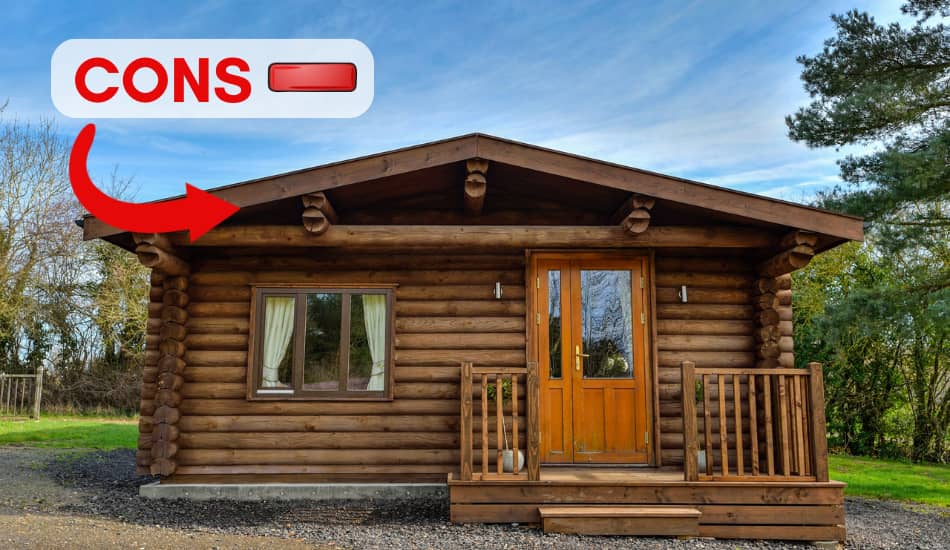
Log cabins are homes that are made primarily from logs. These homes are often seen as cozy family retreats, but they can also be a place where you can go on vacation and relax.
They have been very popular, especially in places like Canada and the US, for years, with a deep-rooted history in America from the days of the pioneers and their iconic log cabins. In this article, we’ll go through all the disadvantages of log cabins. So, let’s start!
What Are the Disadvantages of Owning a Log Cabin? Owning a log cabin comes with several disadvantages: they require more maintenance than traditional homes to prevent deterioration, they can be more challenging to insure due to perceived risks, and they are often more susceptible to pest infestations due to their wooden construction.
Although we will talk about their cons in this article, this does not mean that they are a bad investment. Before jumping into the topic of whether or not you should buy a log cabin, it’s essential to know these drawbacks. In a few moments, we’ll go through the challenges of owning a log cabin and tell you all the insights so you can understand the main problems these cabins have.
Table of Contents
10 Disadvantages Of Log Cabin Homes
This section will cover all the disadvantages (cons) of owning a log cabin home. We’ll go through everything, from maintenance challenges to insurance issues. Understanding these cons can help potential homeowners decide whether to buy a log cabin for living. Here are 10 disadvantages of log cabins:
1. They Are Not Cheap To Build
Building a log cabin can cost around 30% more than a typical home. They’re not simple to build, either. You will need to hire professionals to build a log home.
This is because the logs must undergo proper treatment and milling. Hiring a knowledgeable contractor familiar with the nuances of log construction is essential. Without the right treatment or construction techniques, the log home might deteriorate faster or face structural problems in the future.
2. Log Cabins Need Constant Attention to Stay in Shape
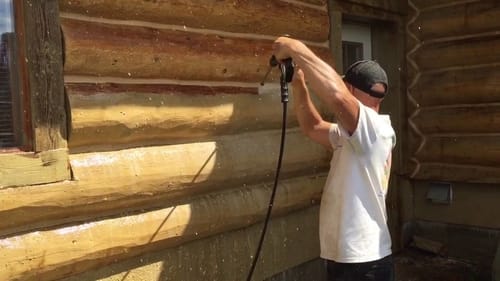
Maintaining a log cabin isn’t just a one-time thing; it demands consistent attention. Ensuring that the log cabin stays in good condition involves both time and money, making these homes a more demanding investment.
Without regular maintenance, log cabins start to wear down, which impacts their price and value over time. A deteriorating cabin not only loses market value but also compromises living conditions. Living in a rundown log home isn’t good for your health. So, if you’re not prepared to invest the necessary time and resources, owning or constructing one might not be in your best interest.
3. Log Cabins Are Hard to Sell
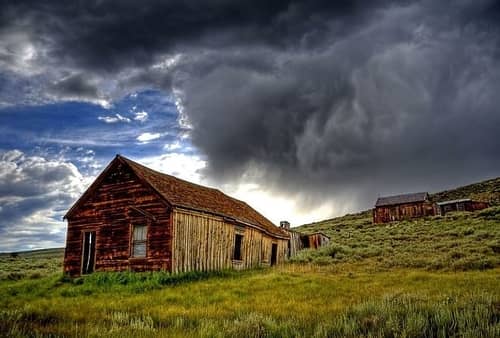
Buying or constructing a log cabin is often viewed as an investment. However, a significant problem that is associated with log cabins is the struggle to find buyers. The potential buyer must have a passion and love for such homes, which is hard to find.
Typical homes tend to be on the market for a shorter period compared to log cabins. One primary reason is that log cabins, when not well-maintained, wear down faster than traditional homes. Issues arise, especially if the prior homeowner does not take care of his log cabin.
4. Higher Upkeep Compared to Normal Homes
One significant aspect of log cabins is their demand for constant maintenance compared to standard homes. While a regular cleaning routine suffices for most houses, a log cabin demands more care. You must be prepared to invest a lot of time to keep the log cabin in good condition.
Though log cabins boast energy efficiency, their upkeep demands surpass those of ordinary homes. If you’re not keen on investing effort or funds into maintenance, holding onto such a property might be challenging in the long run. It’s worth noting: no log home is maintenance-free.
Related Article: 10 Advantages Of Log Cabin Homes
5. Log Cabins Need Different Heating Solutions
The heating methods of a log cabin are not the same as those of regular houses. The typical duct heating systems don’t quite fit because of their log wall structures and visible beams. Instead of that, you might need to use an electric heater or wood-burning stove to warm the place up.
Also, living in such cabins sometimes compromises modern conveniences like steady electricity. While the serenity of seclusion might be appealing to someone, the lack of electricity can sometimes be a problem.
6. Difficult to Get Insurance For Log Cabins
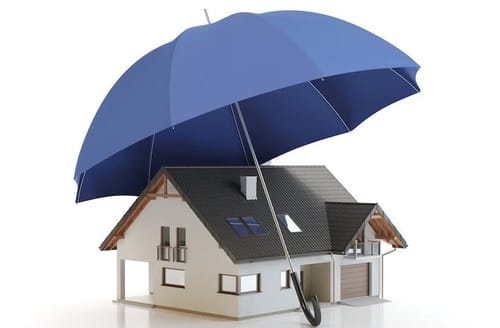
Insurance providers tend to be hesitant about covering log cabin homes. That’s because log cabins are mostly located in forests where is a high probability of fire. And given that many log cabins are built in countryside locations, this concern is frequently justified for insurers.
It should also be taken into account that some areas are very difficult, if not impossible, to reach, which also creates an additional problem that needs to be considered.
7. No Electricity
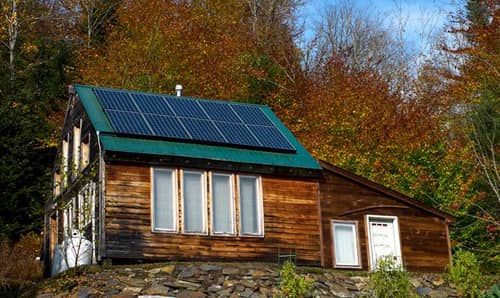
Embracing life in a log cabin means stepping away from normal life, which means that you will most likely not have electricity, which is a big problem. However, there is a solution. You can install solar panels on the roof, but sometimes they will not be enough to provide you with electricity for the whole day.
This peaceful detachment can be a blessing for some people, but others might find the lack of modern conveniences hard to cope with. Ultimately, it boils down to individual preferences and lifestyle choices.
8. Problem With Pests
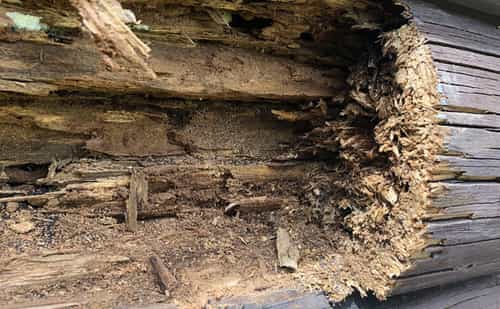
Given that log cabins are constructed primarily of wood, they can attract unwanted guests like pests. Prebuilt cabins are especially prone to infestations, with insects like carpenter ants setting up residence and leaving piles of sawdust behind.
Whether you’re interested in buying a cabin or considering building one, it’s very important to ascertain the wood quality used. Opting for high-quality wood can deter pests, such as carpenter bees, ensuring both your investment and peace of mind remain intact.
9. Limited Architectural Flexibility
Limited architectural flexibility in log cabins means that homeowners face challenges when modifying or expanding their existing structure (in this case, the log cabin).
The inherent design and reliance on logs can make complicated and costly alterations. As a result, those wishing for adaptability or future renovations may find their options more constrained compared to traditional homes.
10. Some Log Cabin Kits Will Not Fit Perfectly
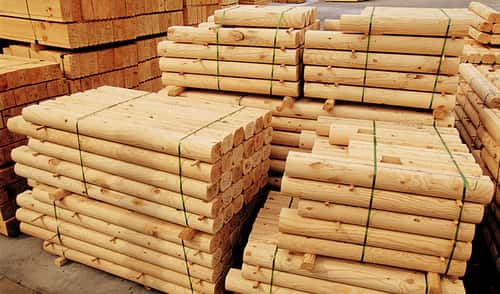
Many log cabin kits are designed to align with predetermined designs. However, not every kit will be compatible with every log home. It’s wise to research thoroughly before making a purchase. Checking user feedback, ratings, and similar details can be beneficial when choosing a kit.
For those who want to learn more, be sure to watch this youtube video about Log Cabins:
Related Article: Pros And Cons Of Log Cabin Homes
FAQ: People Also Ask
How Long Can You Live in a Log Cabin?
Living full-time in a log cabin is possible, given that it’s well-insulated, fitted with proper glazing, comes with electricity (in some cases), and is equipped with hot water. Besides permanent residence, these cabins can also serve as a place for vacation. Ultimately, the duration of your stay boils down to your personal preferences.
What Is The Lifespan of A Log Cabin?
With the right maintenance, a log cabin can last anywhere from 50 years to a whole century. Historical wooden buildings and log homes across Europe, where these structures originated, stand as a testament. With diligent care, these homes can last for over a hundred years.
Final Thoughts
Owning a log cabin today is something that has no price tag, especially if you are a person who likes to live in nature, far from everything. However, owning a log cabin requires a lot of time and work. This is something that not everyone is willing to invest in.
Therefore, in this article, you can see the main disadvantages of these homes. I hope you now understand better and can more easily decide whether a log cabin home is right for you. Hope this article helped you with that.
